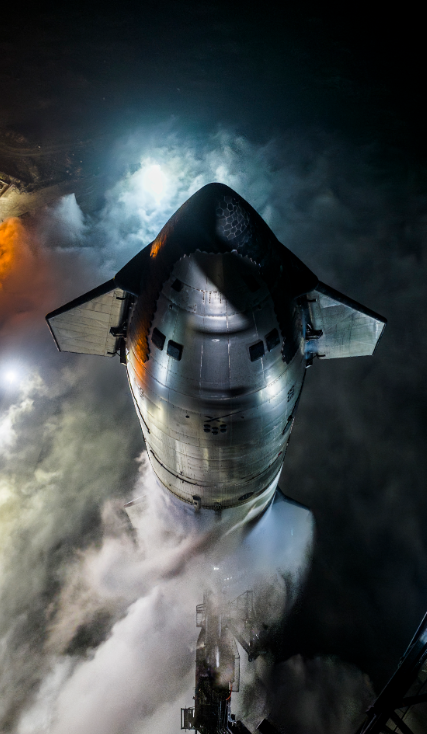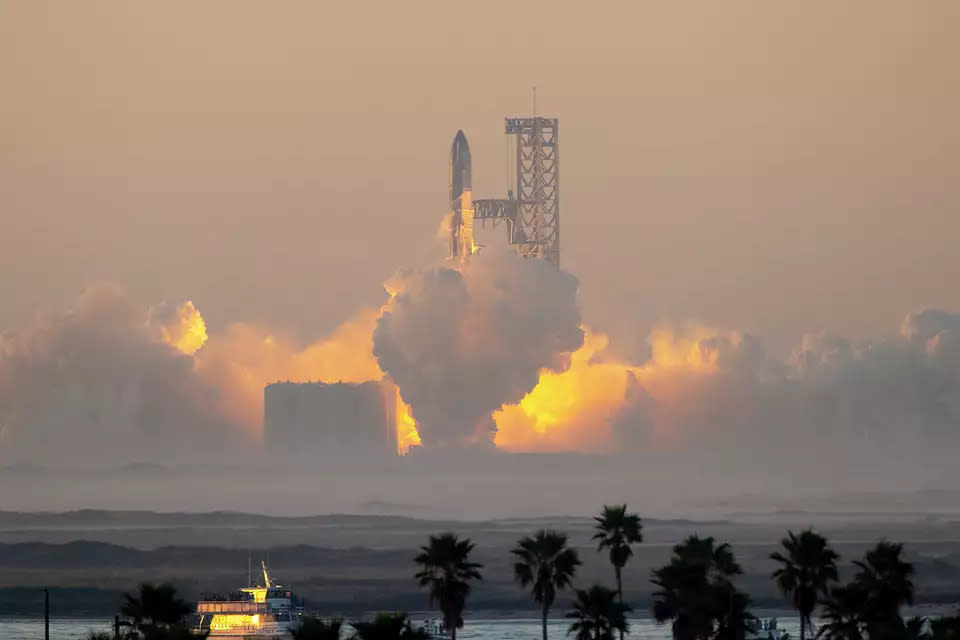SpaceX plans another Starship flight test from Texas as Space Coast watches
With SpaceX planning a third test flight of Starship from Boca Chica, Texas, as early as Thursday, those here on the Space Coast are watching in anticipation — and not just because past tests ended in flames.
SpaceX is looking to develop a new Starship-Super Heavy launch complex at Cape Canaveral Space Force Station, and has begun the environmental review process. The organization seeks to have the pad operational as soon as 2026.
Starship, the most powerful rocket from SpaceX, is aiming to make its third Flight Test (IFT-3) from Starbase. This launch will feature a fully stacked launch system.

The first test flight happened in April 2023 but the vehicle only rose to 39 km (24 mi) over the Gulf of Mexico before leaking propellant caused a fire in the Super Heavy booster. This resulted in SpaceX losing communication and control of Starship. According to SpaceX, the Autonomous Flight Safety System (AFSS) — a self-destruct safety system —took over, detonating the vehicle just under 4 minutes into the flight.
The second test flight was in November 2023 and according to the SpaceX website, Starship reached space for the first time. However, trouble with liquid oxygen supply to an engine occurred during the flight. The issue caused the failure of one engine, leading to the fiery ending everyone saw.
Closer to home, plans to launch Starship from Cape Canaveral Space Force Base are in the surveying phase. Three local meetings were held in Brevard County to gain feedback from the public on the proposed development and evaluate possible environmental impacts.
What will be Impact: More SpaceX Starship-Super Heavy details revealed for proposed launches at Cape Canaveral
With this new breed of rocket ending its test flights in fiery displays, it is understandable why some might be nervous about the possibility of seeing it rise at Cape Canaveral.
Why did previous Starship test flights falter?
On Nov. 18 2023, the fully stacked Starship launched on its second flight test from Boca Chica. What most remember from that flight was the explosion at the end.
Towering 397 feet-tall, the fully stacked Starship proved it could clear the pad’s 500-foot tower.

As Starship cleared the pad, all 33 of the Raptor engines continued to function without issue. The unique circular pattern of the 33 engines glowed as the huge rocket ascended. For the first time, all engines displayed functionality during its rise to intended altitude.
Just over 3.5 minutes into the flight, after successful stage separation, thirteen of the engines were to steer the rocket to the landing site. It was at this point that the failure occurred.
What went wrong: Here's what caused the SpaceX Starship explosion and how it's different for Florida
According to the SpaceX website, the failure was “determined to be filter blockage where liquid oxygen is supplied to the engines, leading to a loss of inlet pressure in engine oxidizer pumps that eventually resulted in one engine failing in a way that resulted in the loss of the vehicle”.
This second flight on November 18th reached an altitude of around 150 km, making it the first Starship to reach space.
SpaceX says the upcoming third test flight comes with vehicle upgrades and lessons learned from the previous two flights.
What is SpaceX's goal with Starship?
Starship is the first rocket of its kind, and SpaceX hopes it will revolutionize space exploration.
In the past, most rockets were simply discarded, and the building process began once again. SpaceX relies on reusability which helps bring down costs. This fully reusable rocket is intended to transport payloads and crews to Earth orbit and far beyond.
Starship promises the ability to transport up to 100 people to off-world destinations and carry up to 150 metric tons to space. It will also transport satellites, build up a lunar base, and could even provide point-to-point transportation on Earth.
By comparison, NASA data showed the space shuttle could carry a crew of 8 and provided over 1.2 million pounds of thrust. The largest payload the shuttle carried was the Chandra X-ray Observatory, which was 50,000 pounds (22,800 kg).
SpaceX still has a long way to go. But he company is already thinking long term with design of the spacecraft. On March 6, SpaceX CEO Elon Musk stated on X that “Starship will have a small spin on the way to Mars. Even a tiny gravity vector is better than none”.
Starship third test flight fast approaching
On March 4, SpaceX announced on X that Starship had successfully completed launch rehearsal at Starbase. This included “loading more than 10 million pounds of propellant on Starship and Super Heavy and taking the flight-like countdown to T-10 seconds”.
Booster 10 and Starship 28 were shown to be stacked on the launch pad; steam rising from underneath.
When's the next launch? Is there a launch today? Upcoming rocket launch schedule for SpaceX, NASA in Florida
Why launch on Pi Day? What is the Significance of Pi on Spaceflight?
The 14th of March is annually hailed as Pi Day, as the date signifies the first 3 digits of the Pi constant – 3.14.
SpaceX teams might be hoping that a Pi Day launch brings them luck. The Pi constant is used in numerous equations to calculate data for spacecrafts.
Pi is used in determining how much fuel remains in the spherical propellant tanks. SpaceX will use Pi to calculate out how much fuel remains in the tanks during Starship's flight.
Pi is used when determining the orbital period of a spacecraft - the time it takes for one object to orbit another.
Pi is used to get a spacecraft into orbit around another planet. The long term plan is to get Starship to the Moon and then Mars.
Brooke Edwards is a Space Reporter for Florida Today. You can contact her at [email protected]
This article originally appeared on Florida Today: SpaceX Starship on 3rd test from Texas, Florida preps for launch site
